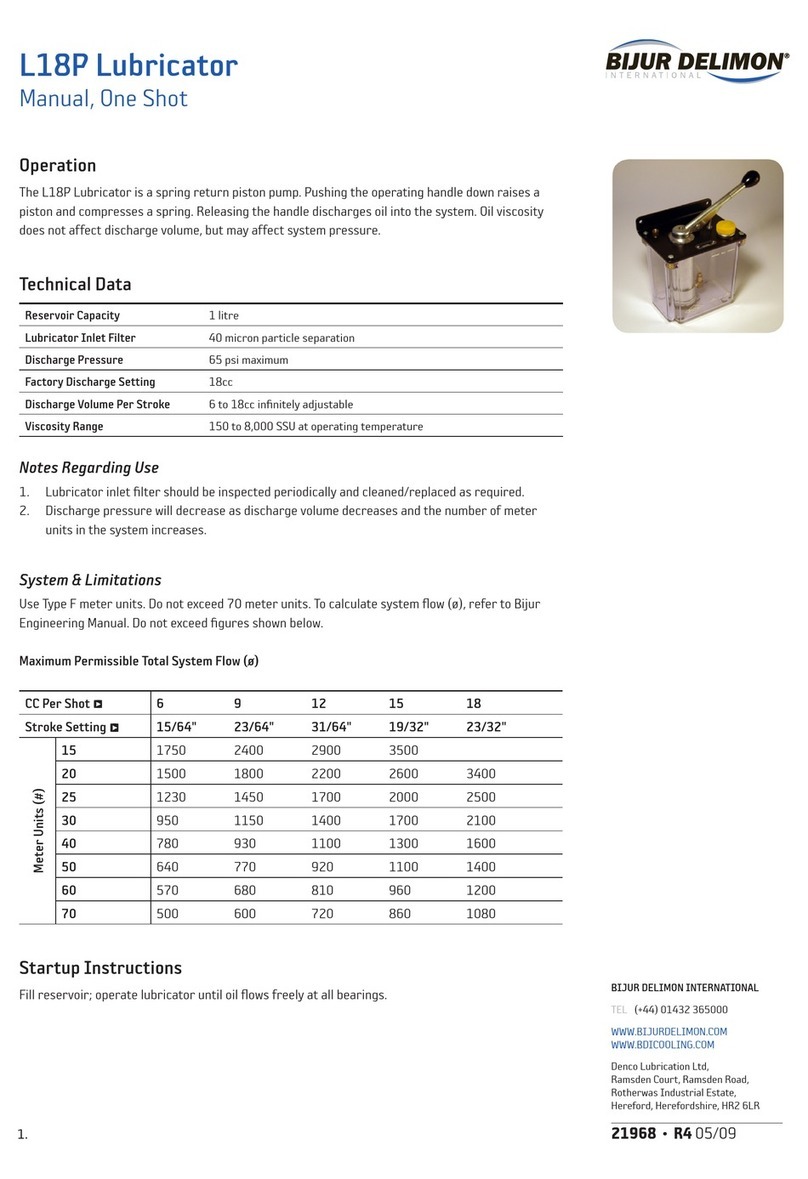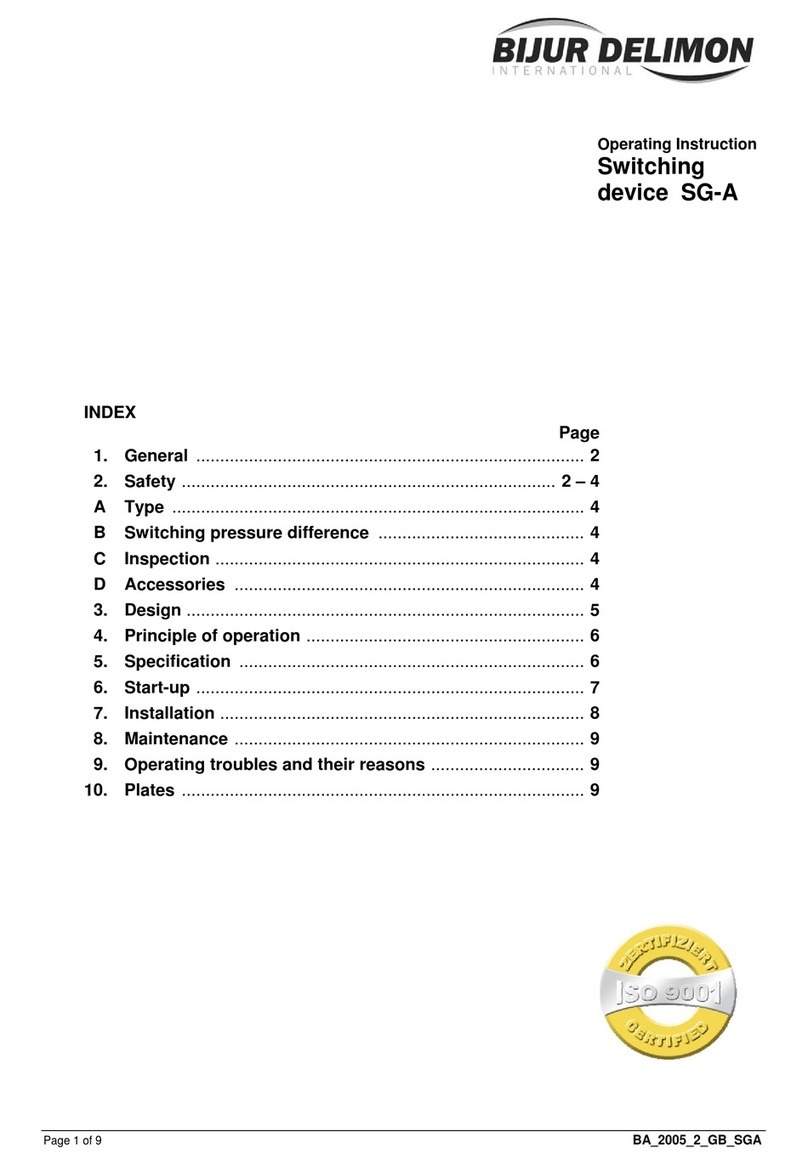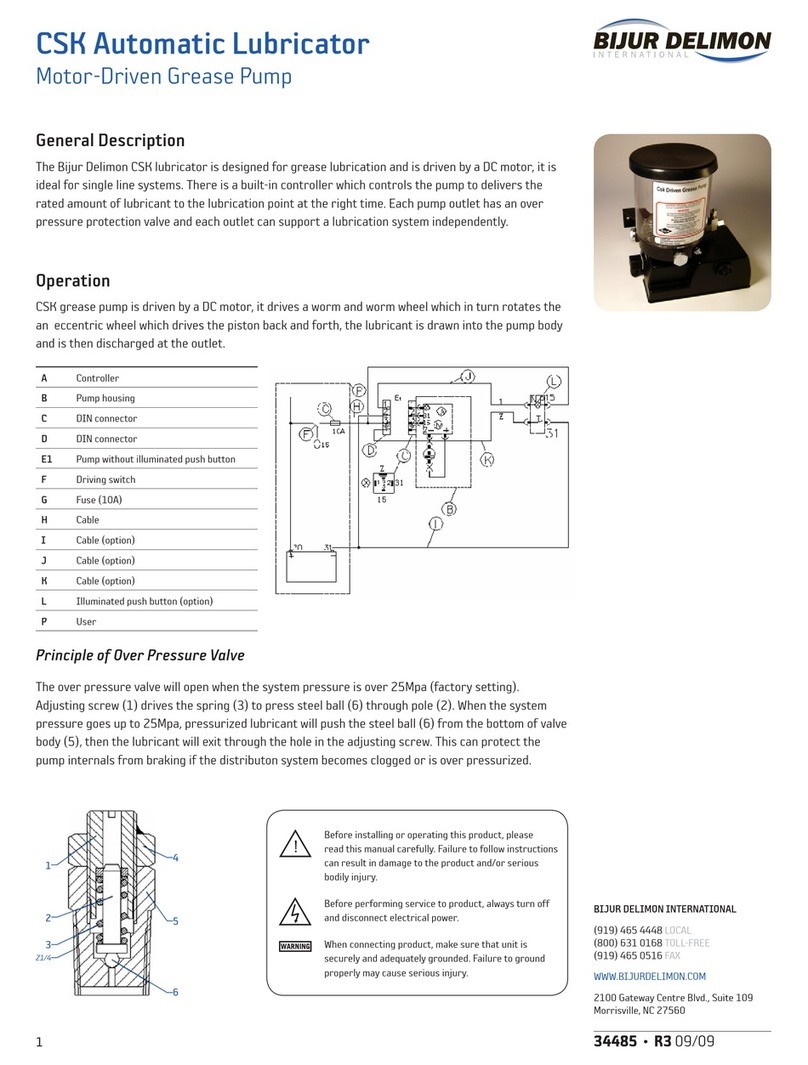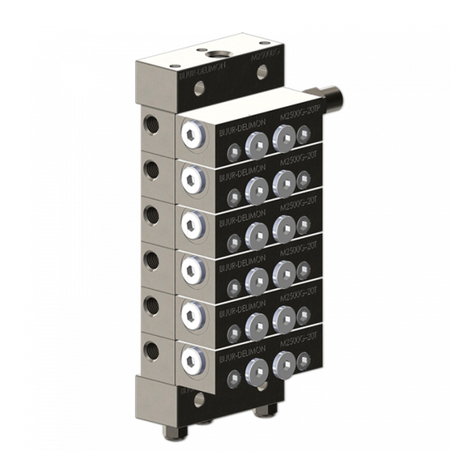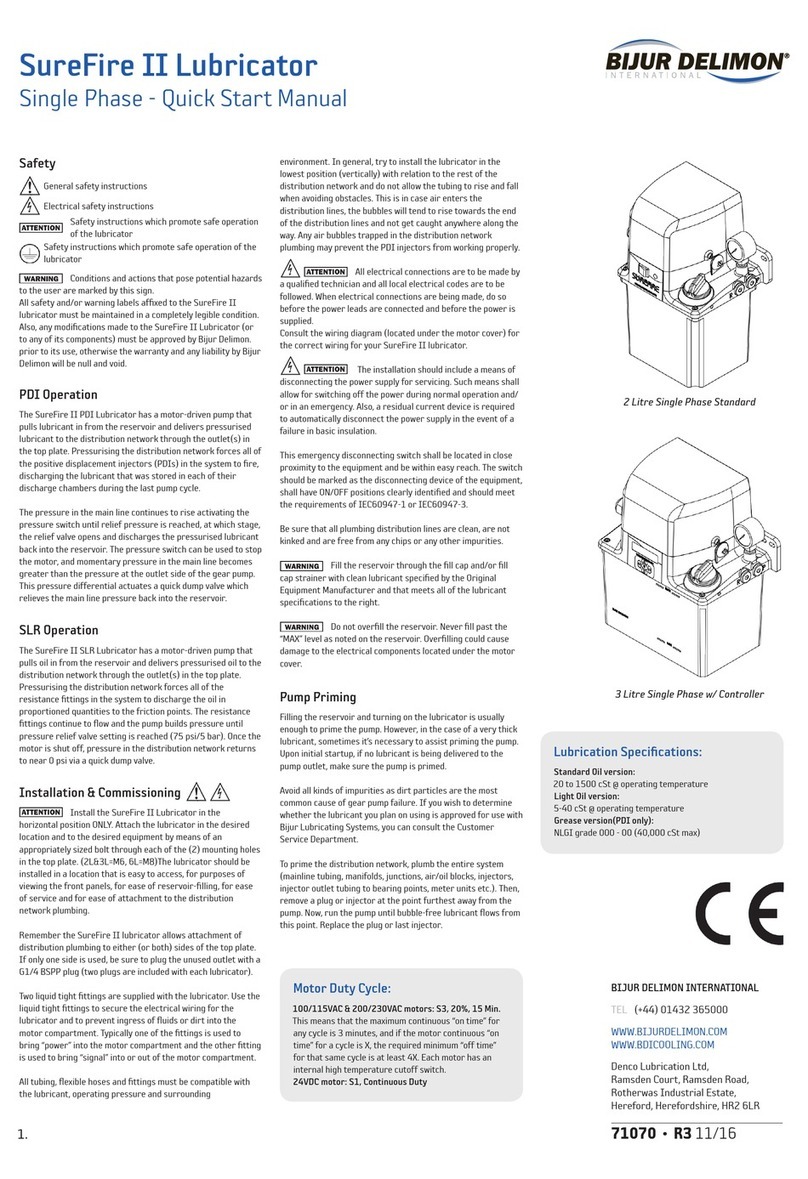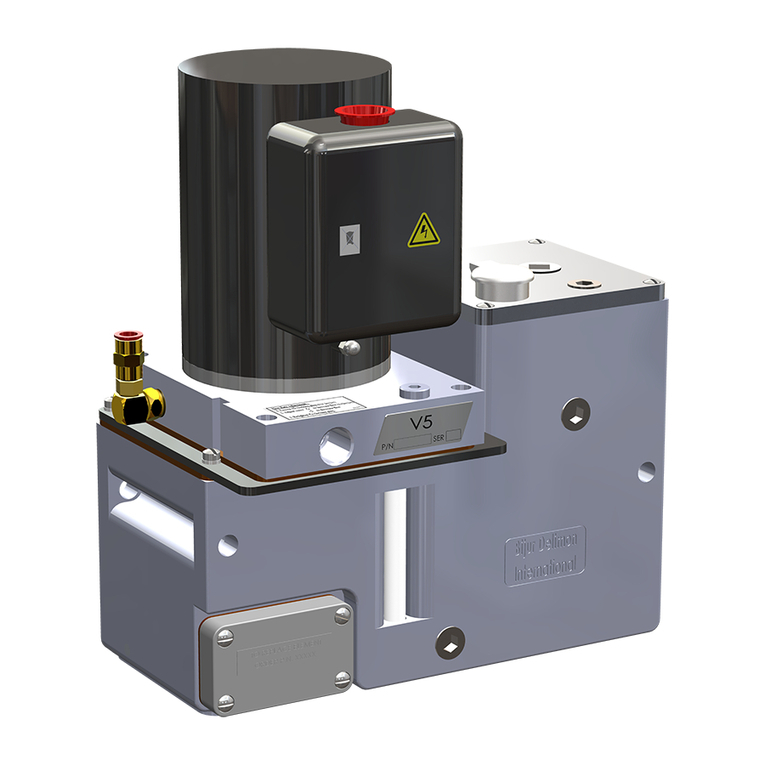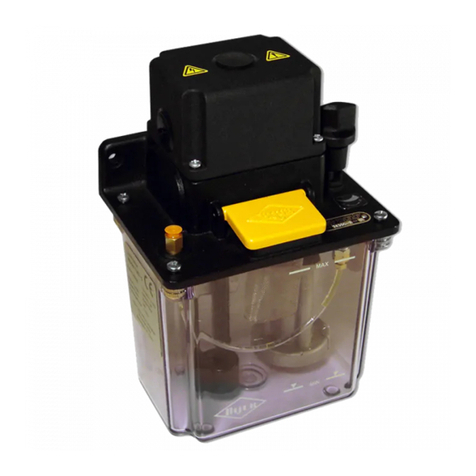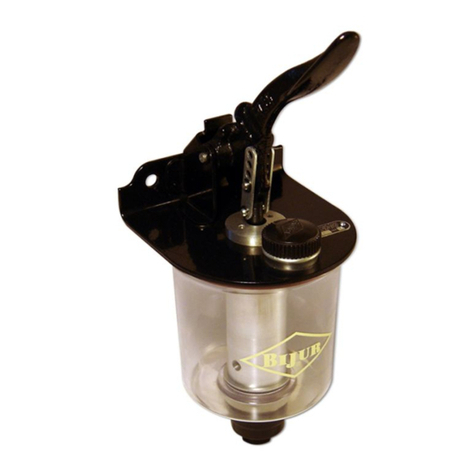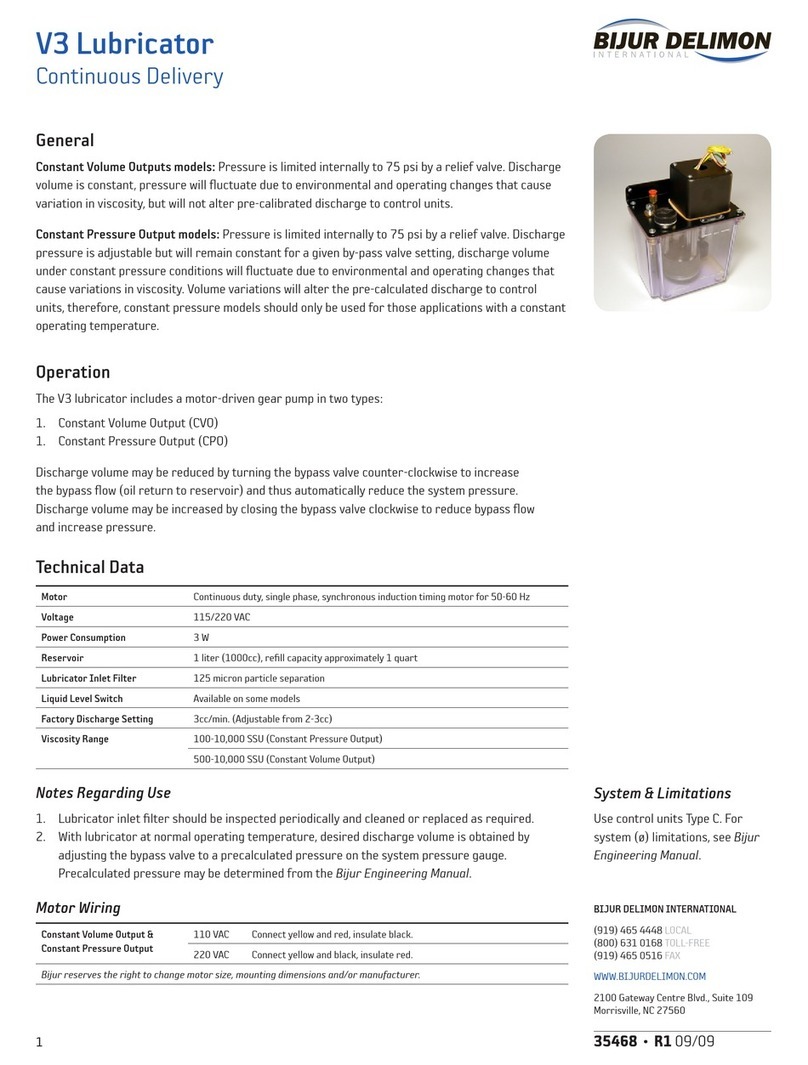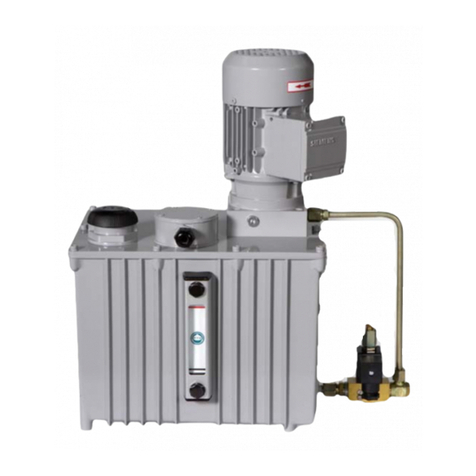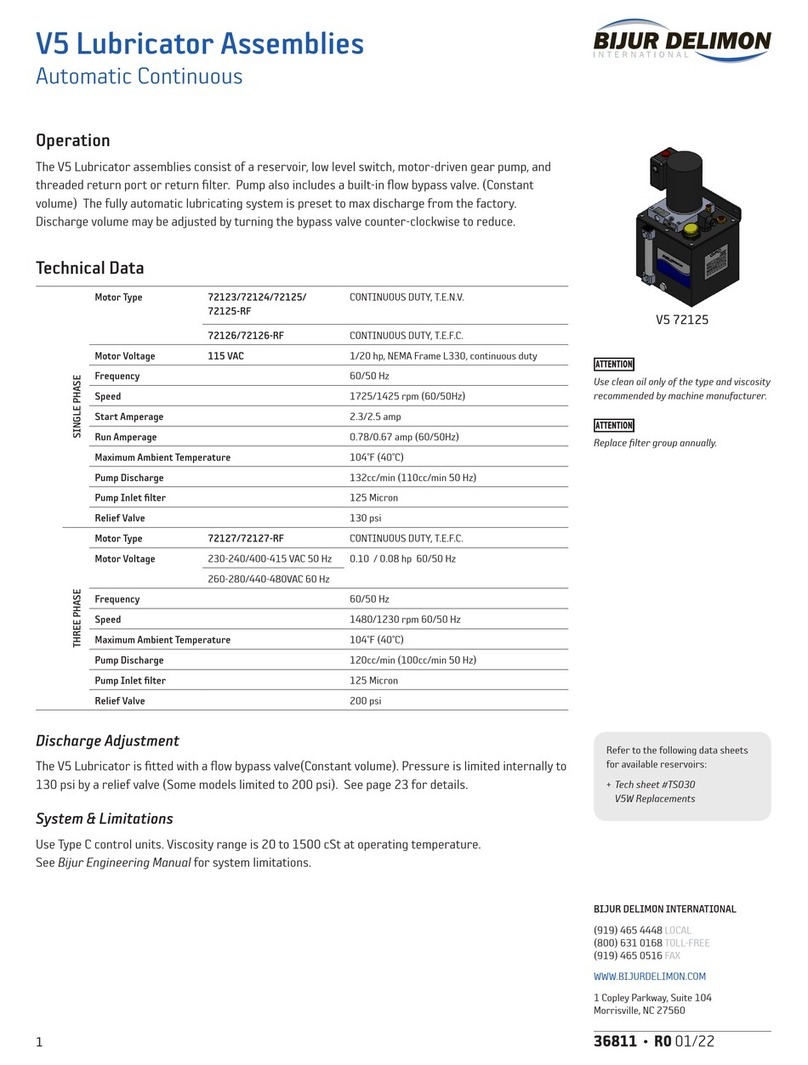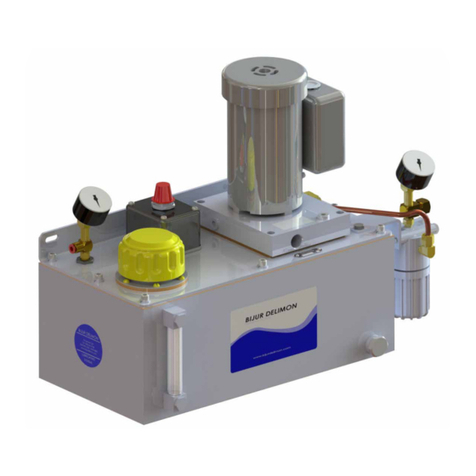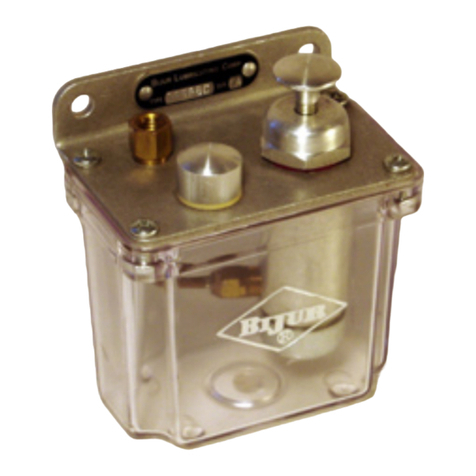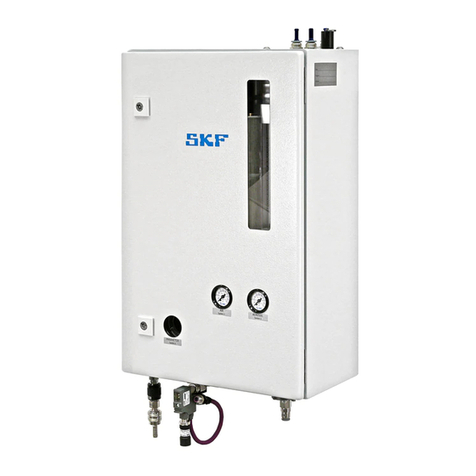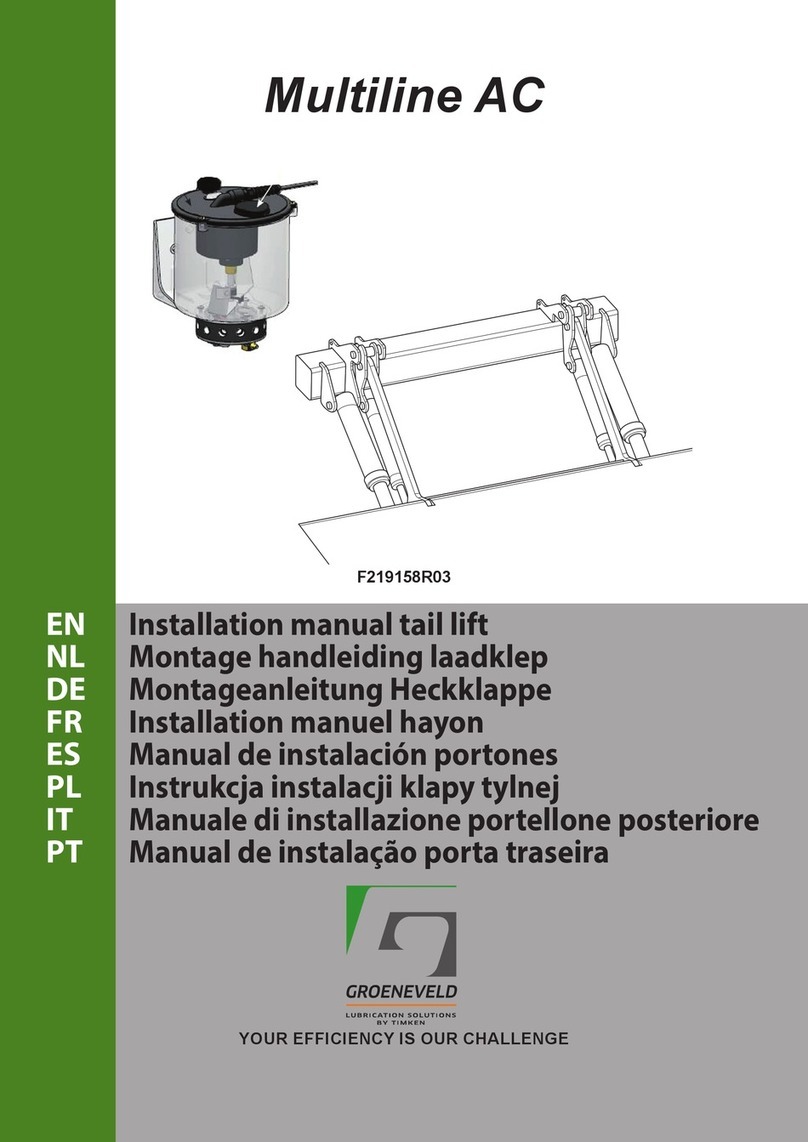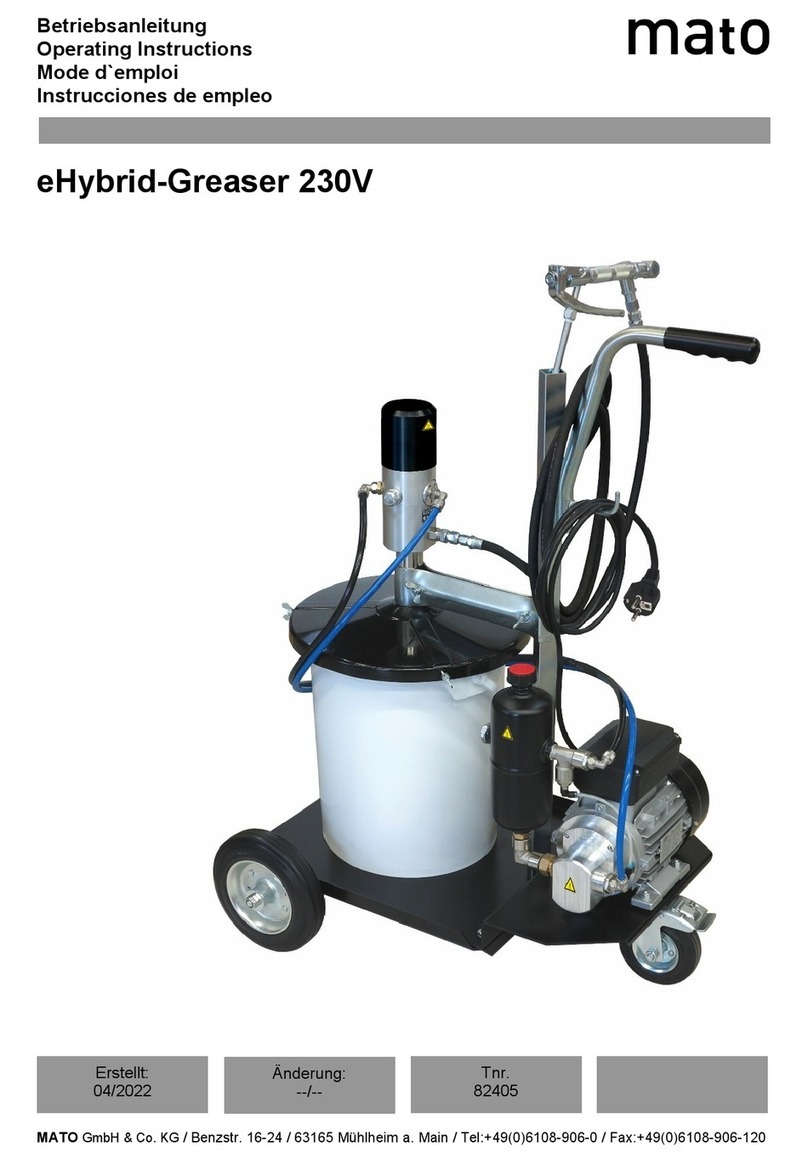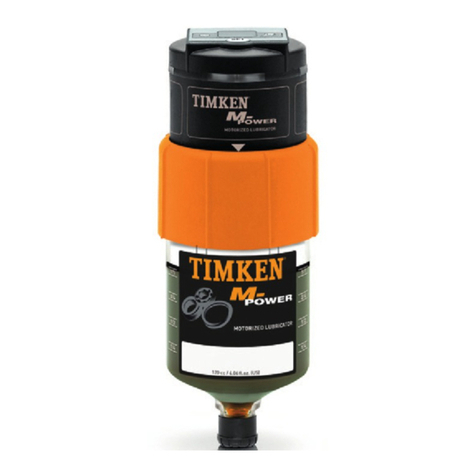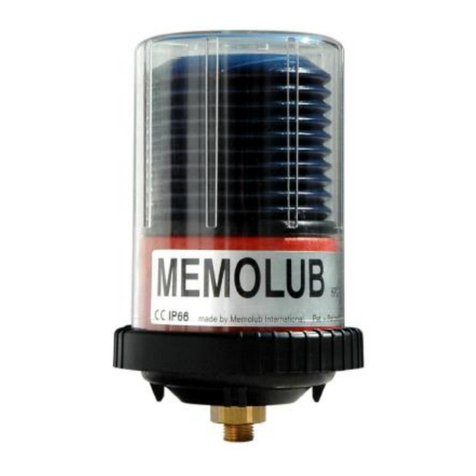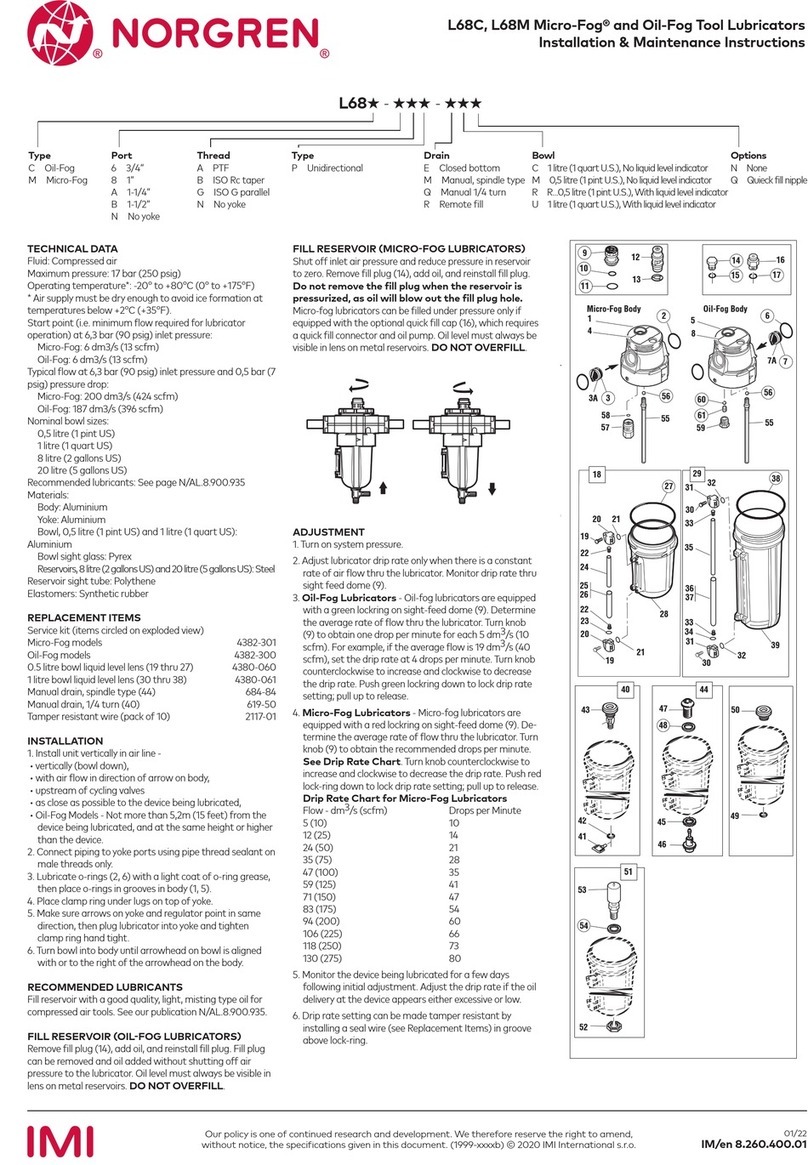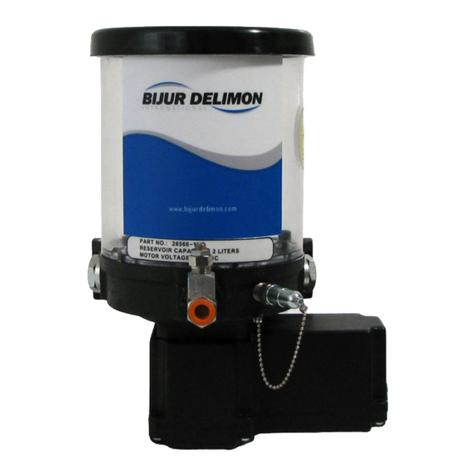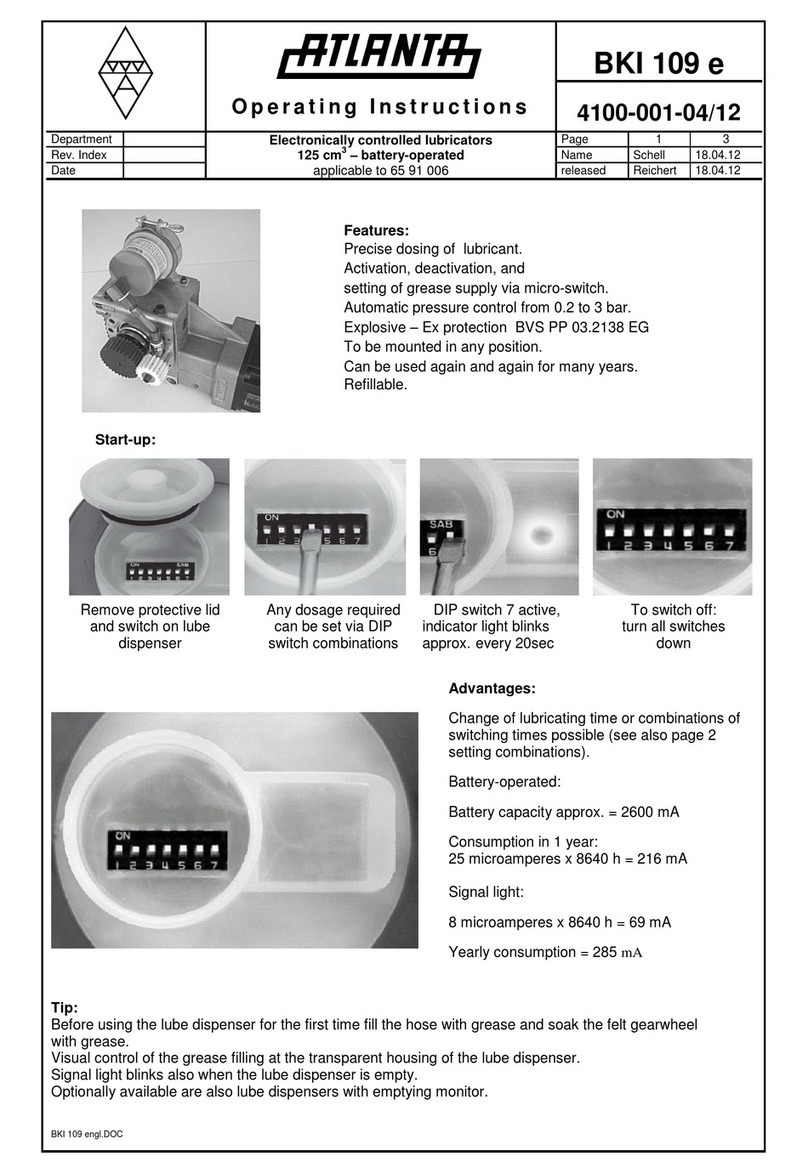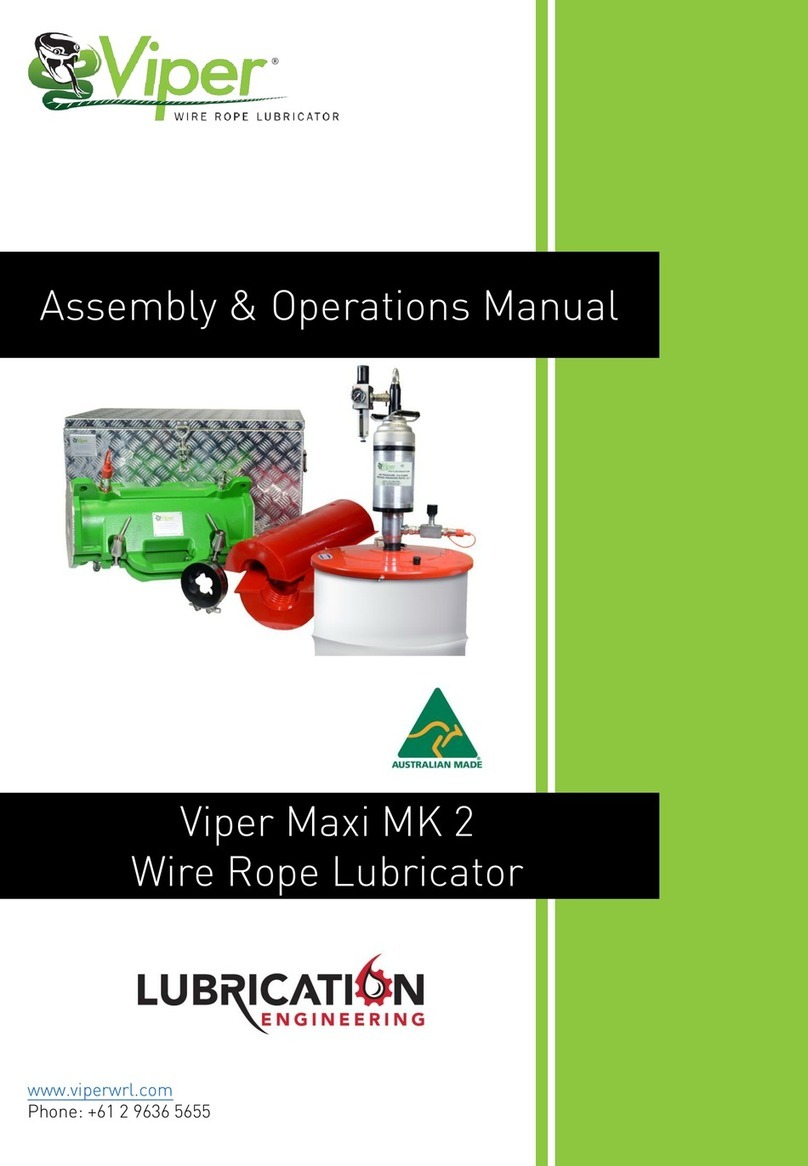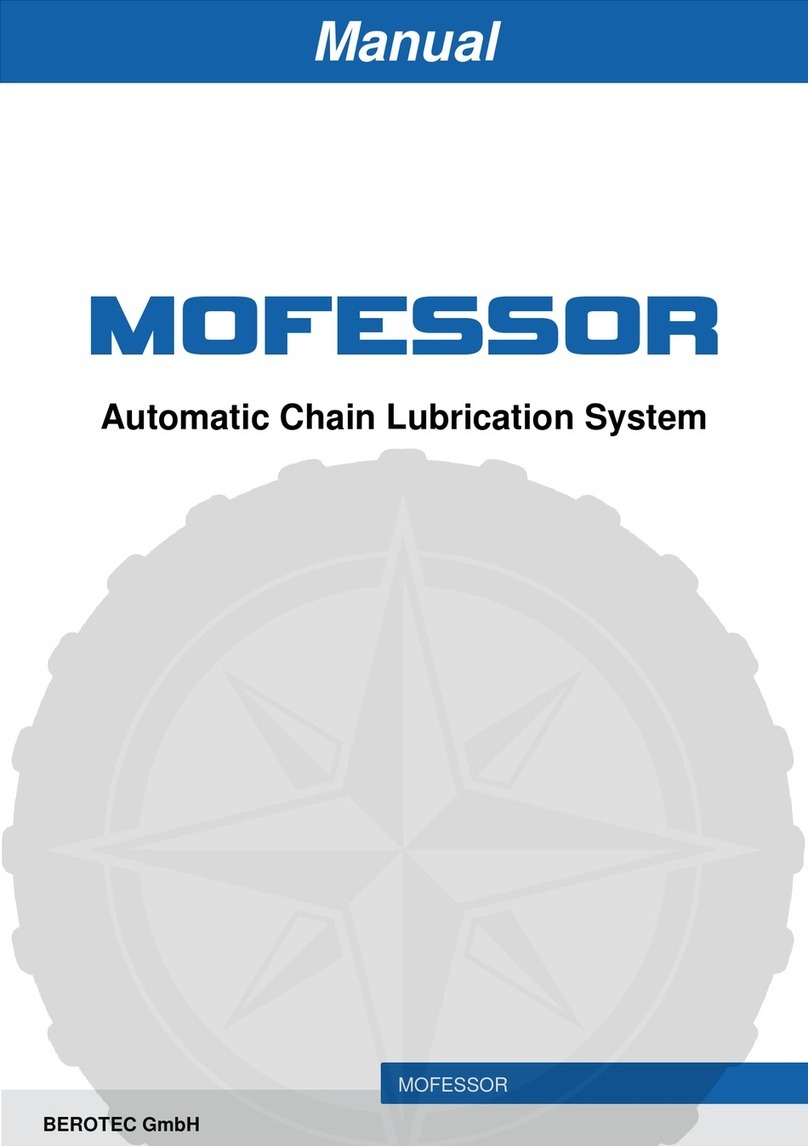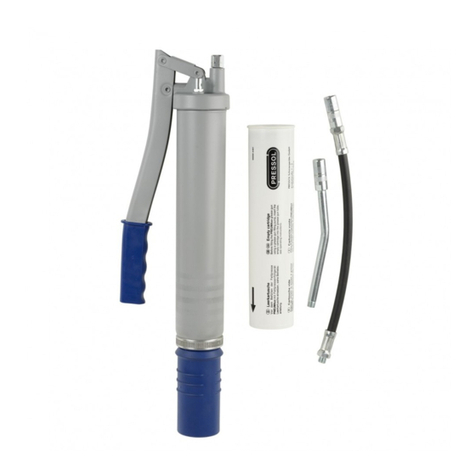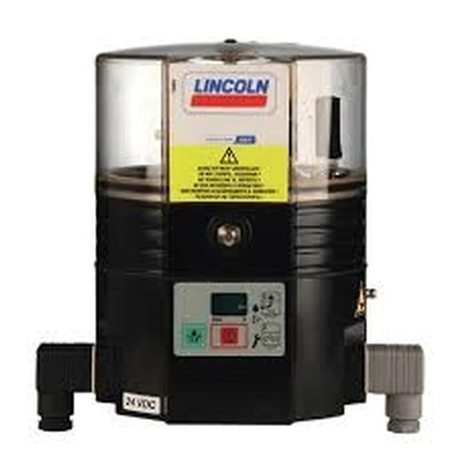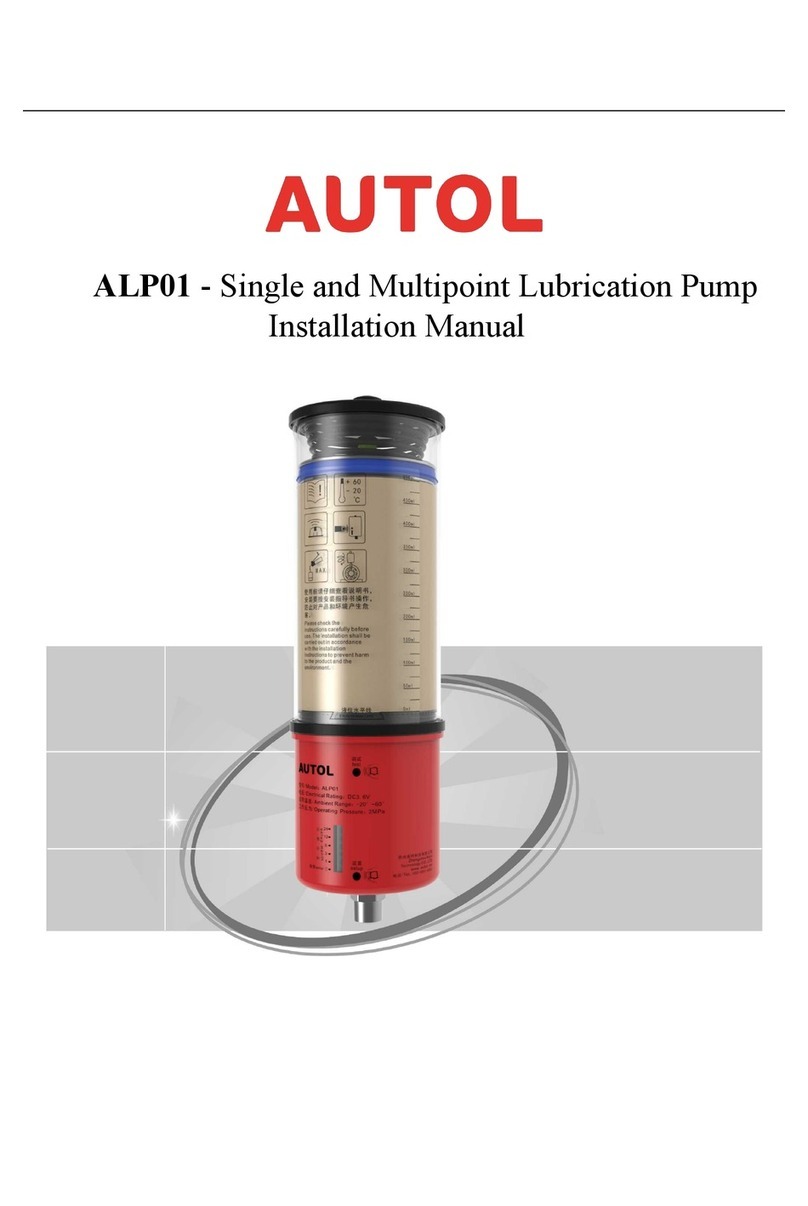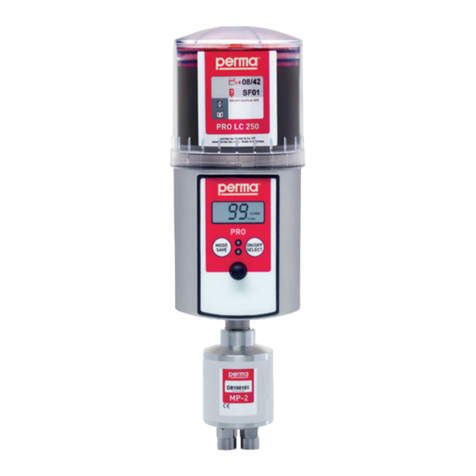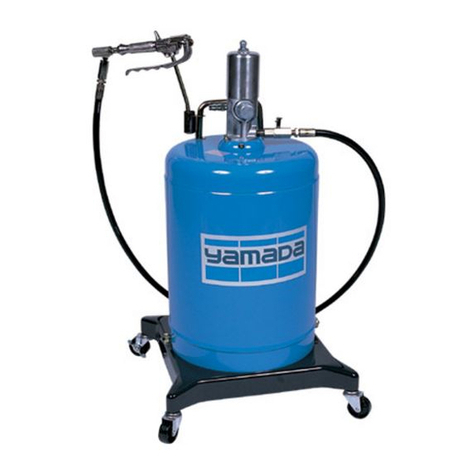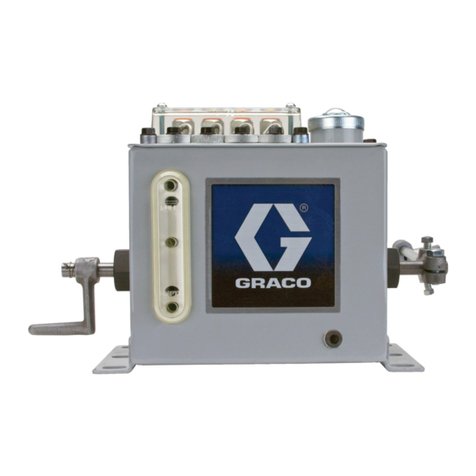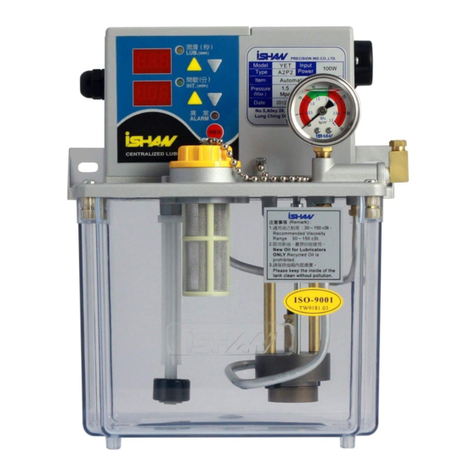
The procedure described below assures removal of air from all parts of the system. Air, trapped in the pump throat, can prevent
priming on the first stroke and result in damaging the pump cylinder and piston. Air, trapped in the supply lines, will prevent the
pump from developing system shut down pressure without long operating periods and subsequent time-out of the fault signal
timer.
Pump Gear Housing (CS1000, CS2000, DC41 and DC42 only): Before starting pump, fill gear housing to level shown in the
applicable drawing in the pump section with a compounded steam cylinder oil containing 5 to 10% acidless tallow with a viscosity
of 150 SSU at 210 F. Change two weeks after the initial fill and yearly thereafter.
Reservoir:* Fill with clean lubricant.
A. CS1000 & CS2000 Grease Reservoirs: Fill until grease exhausts thru relief hole on top.
B. DC41, and DC42 Grease Reservoirs when Completely Empty: To eliminate air, add several quarts of heavy cylinder oil
before filling balance with grease. Also, open air bleeder valve U - 127B (it is located near top of the follower indicator rod)
to permit excape of air below follower plate.
Air Control Panel. Set controls on air control panel to meet requirements of the air barrel pump.
Supply Lines (air barrel pumps only): Fill the pump to reversing valve lube supply hose by disconnecting it at the point where
it attaches to the reversing valve inlet port and operating the pump until lubricant appears at the end of the hose. The pump may
be started and stopped by manually tripping the reset lever on the timer, or operating the manual override button on top of the air
pump’s solenoid valve. Re-connect the hose.
Supply Lines: Fill With clean lubricant by operating system pump† or, preferably by using a high volume high pressure barrel
pump. During this period, disconnect both main lines at their terminating point. This is at the reversing valve if lines form a com-
plete loop or at the last measuring valve if lines end there. Open air bleeder valves located at high points in the pipe lines and then
close them in sequence starting with the pump and working outward as lubricant, free of air and foreign matter, emerges. When
lubricant flows from the end of one line free of air and foreign matter, reconnect that line, and run pump until reversing valve oper-
ates Allow pressure to dissipate in that line then fill, purge, and reconnect the other line in the same manner.
NOTE: Disconnecting of supply lines helps operator identify lines of systems with DR4 type reversing valves (CS2000
and DC42). Supply line #1 must connect to return line #1 and supply line #2 to return line #2.
Fill and purge branch lines leading off main supply lines as described above. Branch lines must be unplugged at their ends
until a solid flow of clean, air-free lubricant appears. See Fig. 1.
Bearings: Fill with lubricant. To assure removal of all air, use a hand gun or oil can. Connect discharge lines to the bearings.
DC1-3
SYSTEM INSTALLATION AND START UP
FILLING SYSTEM WITH LUBRICANT
Fig. Fig. 3- CS2000 Station w/(DR-4) Reversing Valve Valve
*These stations can handle most NLGI#1 grease and, under certain conditions, NLGI #2
†CAUTION: Pump drive shaft must rotate In direction recommended In applicable pump section or as shown by arrow on pump housing.
Incorrect direct on of rotalion will damage CS1000, CS2000, DC41 or DC42 pumps
